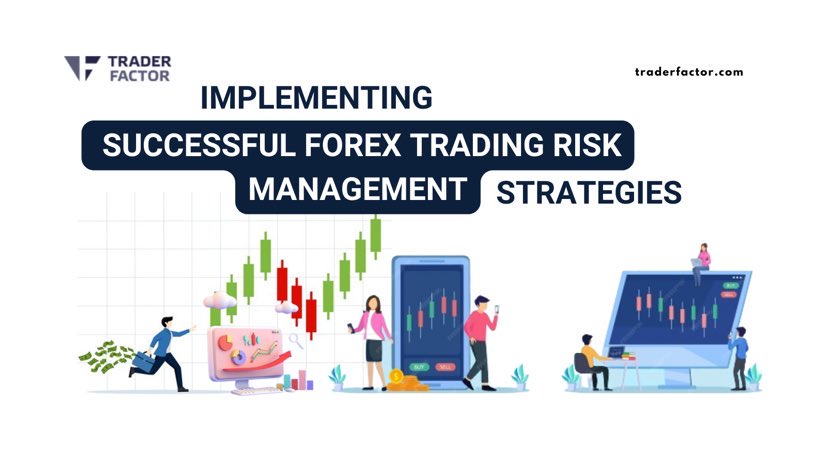Are you ready to navigate the treacherous waters of forex trading? Just like a skilled captain who anticipates storms and navigates safely, implementing successful risk management strategies is crucial for your trading journey.
By understanding the inherent risks in forex trading and setting realistic goals, you will be able to steer clear of potential pitfalls.
Utilizing stop-loss orders effectively will protect your capital, while diversifying your forex portfolio will spread the risk and increase your chances of success.
Remember, the key to success lies in monitoring and adjusting your risk management strategies as needed.
With the right approach, you can confidently sail through the unpredictable forex market and achieve your trading goals.
Key Takeaways
- Analyze potential losses and gains associated with currency exchange rate fluctuations
- Set realistic goals and assess risk tolerance
- Utilize stop-loss orders effectively to protect capital and limit losses
- Diversify your forex portfolio to manage risk and profit in different market conditions

Understanding Risk in Forex Trading
To understand risk in forex trading, you need to analyze the potential losses and gains associated with the fluctuations of currency exchange rates. It’s crucial to identify market trends and understand how they can impact your trading decisions.
By keeping a close eye on market trends, you can make more informed choices about when to enter or exit a trade. This will help you minimize the risk of making poor decisions based on the emotions of the moment.
Another critical aspect of risk management in forex trading is managing leverage effectively. Leverage is a tool that allows you to trade larger positions with a smaller amount of capital. While leverage can amplify your potential profits, it can also magnify your losses. Therefore, it’s essential to use leverage judiciously and not overextend yourself. Always consider your risk tolerance and set appropriate stop-loss orders to limit potential losses.

Setting Realistic Goals and Risk Tolerance
You need to set realistic goals and determine your risk tolerance when implementing successful forex trading risk management strategies.
Balancing risk and reward is essential in the forex market. It’s important to understand that higher potential returns come with higher risks.
To set realistic goals, you need to assess your trading skills, experience, and capital availability. Consider how much time and effort you can devote to trading and set achievable targets accordingly. Setting unrealistic goals can lead to frustration and impulsive decision-making.
It’s crucial to manage your emotions in forex trading. Emotions like fear and greed can cloud your judgment and result in poor trading decisions. It’s important to stay disciplined and stick to your trading plan. Implementing risk management strategies can help you manage your emotions effectively.
Determining your risk tolerance is another crucial aspect of successful forex trading. Assess how much loss you can tolerate financially and emotionally. Setting a risk tolerance level will help you determine the appropriate position size and stop-loss levels for each trade.

Utilizing Stop Loss Orders Effectively
Effectively utilizing stop-loss orders is key to managing risk in forex trading. By setting up stop-loss orders, you can protect your capital and limit potential losses.
But stop-loss orders aren’t just about minimizing risk; they can also help you maximize profits. When analyzing market trends, it’s important to identify key support and resistance levels. By placing your stop loss orders below these levels, you can avoid being stopped out too early and potentially miss out on profitable trades.
Additionally, trailing stop-loss orders can be used to lock in profits as the market moves in your favor. This type of order adjusts automatically as the price moves, allowing you to capture more gains while still protecting yourself from potential losses.
However, it’s crucial to regularly monitor and adjust your stop-loss orders as market conditions change. By effectively utilizing stop-loss orders, you can manage risk, protect your capital, and increase your chances of successful forex trading.

Diversifying Your Forex Portfolio
By incorporating a variety of currency pairs and trading strategies, you can enhance the diversification of your forex portfolio.
Diversification is a crucial aspect of risk management in forex trading. It involves spreading your investments across different currency pairs and utilizing various trading strategies to minimize potential losses.
One way to diversify your forex portfolio is by trading different currency pairs. Each currency pair has its own characteristics and can be influenced by different factors such as economic news, political events, and market trends. By trading multiple currency pairs, you can reduce the impact of adverse movements in a single currency pair on your overall portfolio.
Another way to diversify is by using different trading strategies. This can include employing hedging strategies, where you open positions in opposite directions to offset potential losses. Additionally, you can use different risk-reward ratios for each trade, allowing you to take calculated risks and potentially increase your profit potential.
Diversifying your forex portfolio not only helps to manage risk but also provides opportunities for profit in different market conditions. Therefore, it’s essential to incorporate a variety of currency pairs and trading strategies to achieve a well-diversified forex portfolio.

Monitoring and Adjusting Risk Management Strategies
Maintaining vigilance and adaptability are key to successfully monitoring and adjusting risk management strategies in forex trading. Evaluating the effectiveness of your risk management strategies is crucial to ensure that they’re working as intended.
Regularly assess the performance of your strategies by analyzing the outcomes of your trades and comparing them to your predetermined risk limits. If you find that your strategies aren’t providing the desired level of protection or aren’t aligning with your trading goals, it may be necessary to make adjustments.
Adapting to market conditions is another essential aspect of monitoring and adjusting risk management strategies. The forex market is constantly evolving, and what worked yesterday may not work today. Stay informed about market trends and news that may impact currency prices.
By understanding the current market conditions, you can modify your risk management strategies accordingly. This may involve adjusting your position sizes, setting tighter stop-loss orders, or diversifying your forex portfolio.
Remember that risk management isn’t a one-size-fits-all approach. It requires ongoing evaluation and fine-tuning to ensure its effectiveness. Regularly monitor your risk management strategies, evaluate their performance, and be willing to make necessary adjustments to adapt to changing market conditions.
This proactive approach will help you mitigate potential losses and increase your chances of success in forex trading.

Frequently Asked Questions
What Are the Key Factors to Consider When Understanding Risk in Forex Trading?
When understanding risk in forex trading, you should consider two key factors: market volatility and leverage usage. These factors play a crucial role in determining the potential risks and rewards involved in your trades.
How Can One Determine Their Risk Tolerance and Set Realistic Goals in Forex Trading?
To determine your risk tolerance and set realistic goals in forex trading, assess how much you’re willing to lose and what you hope to achieve. Understanding your comfort level and objectives will help guide your decision-making process.
What Are Some Effective Techniques for Utilizing Stop Loss Orders in Forex Trading?
Using trailing stop orders is an effective technique for managing risk in forex trading. It allows you to protect your profits by automatically adjusting the stop loss level as the trade moves in your favor. Additionally, the importance of position sizing cannot be overstated.
How Can Diversify One’s Forex Portfolio Help in Managing Risk?
Diversifying your forex portfolio can help manage risk by spreading your investments across different currencies and assets. This strategy can decrease the impact of potential losses and increase the potential for gains.
What Are the Key Aspects to Consider While Monitoring and Adjusting Risk Management Strategies in Forex Trading?
When monitoring and adjusting risk management strategies in forex trading, you need to focus on effective monitoring techniques to stay updated on market trends. Adjust your strategies based on the changing market conditions to minimize risks and maximize profits.

Conclusion
In conclusion, successfully implementing risk management strategies is crucial in forex trading.
By understanding the risks involved, setting realistic goals, and utilizing stop-loss orders effectively, you can minimize potential losses and protect your investments.
Diversifying your forex portfolio further reduces risk and increases the chances of successful trades.
Lastly, continuously monitoring and adjusting your risk management strategies ensures adaptability to changing market conditions, ultimately enhancing your chances of achieving profitable outcomes in the forex market.
Author
-

Phyllis Wangui is a Financial Analyst and News Editor with qualifications in accounting and economics. She has over 20 years of banking and accounting experience, during which she has gained extensive knowledge of the forex, stock news, stock market, forex analysis, cryptos and foreign exchange industries. Phyllis is an avid commentator on these topics and loves to share her insights with others through financial publications and social media platforms.
View all posts













